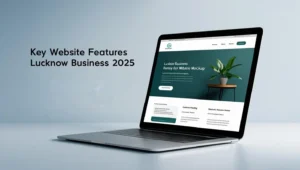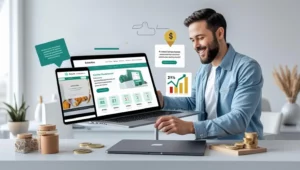In the competitive world of eCommerce, a seamless, fast checkout experience is critical to drive conversions and reduce cart abandonment. For customers, a quick and easy checkout process makes the buying experience more enjoyable and encourages repeat purchases. Below are some essential strategies to help you optimize your eCommerce website for faster checkout and higher conversions.
1. Simplify the Checkout Process
One of the most effective ways to improve checkout speed and increase conversions is by minimizing the number of steps required to complete a purchase. A complicated checkout process often leads to frustration and cart abandonment.
- Enable Guest Checkout: While account creation is valuable for customer loyalty, requiring new users to register can slow down the checkout process. Allowing guest checkout simplifies things for first-time buyers and can increase conversions.
- Consolidate Checkout Pages: Multi-step checkouts can be time-consuming. Consider combining forms into a single page or reducing the process to two steps: billing/shipping information and payment.
- Auto-Fill Options: Leverage auto-fill features to save users time, especially for repeat customers. Auto-filling information like addresses or credit card details (with permission) reduces the time needed to complete the purchase.
Pro Tip: Conduct user testing to identify any bottlenecks in the checkout flow and to make improvements based on real user behavior.
2. Optimize for Mobile Checkout
With more shoppers purchasing on mobile devices, optimizing your eCommerce site for mobile checkout is essential. A mobile-friendly checkout design not only improves user experience but can also significantly boost conversions.
- Responsive Design: Ensure your checkout page is responsive and adapts smoothly to any screen size, especially smaller mobile screens. Elements should be easy to tap, and forms should be optimized for touch input.
- Simplified Payment Options: Enable digital wallets like Apple Pay, Google Pay, and PayPal, which allow users to check out with just a few taps. These methods are secure, fast, and very popular among mobile users.
- One-Click Checkout: For returning customers, consider implementing a one-click checkout option to streamline the purchase process.
Tip: Make it easy for users to switch between mobile and desktop without losing their cart items. Cross-device compatibility helps users complete purchases on whichever device they prefer.
3. Reduce Form Fields and Eliminate Unnecessary Steps
Excessive form fields are one of the biggest barriers to a fast checkout. Request only the essential information needed to process the order.
- Minimal Fields: Only ask for necessary information like shipping and billing details. Avoid optional fields that don’t add value to the purchase process.
- Enable Address Lookup and Auto-Completion: Use an address lookup tool to allow users to input their address with a few keystrokes. This feature speeds up checkout and reduces errors.
- Use Inline Validation: Real-time validation helps users correct errors as they fill in details, reducing the chance of errors that could delay checkout.
4. Offer Multiple Payment Options
Providing various payment methods caters to a broader audience and can prevent potential customers from abandoning their carts due to limited payment options.
- Integrate Digital Wallets: As mentioned earlier, services like Google Pay, Apple Pay, and PayPal make checkout faster, particularly on mobile devices.
- Support Local Payment Methods: For a global eCommerce site, consider accepting payment options popular in specific regions. For example, UPI (Unified Payments Interface) and digital wallets are popular in India.
- BNPL (Buy Now, Pay Later) Options: Offering Buy Now, Pay Later options can increase conversions by appealing to customers who want flexibility in their payments.
Tip: Display available payment options prominently to help customers feel confident and secure during checkout.
5. Optimize Page Load Speed
Slow-loading pages are a primary reason for high bounce rates, especially during checkout. A faster checkout page keeps customers engaged and reduces the likelihood of cart abandonment.
- Compress Images: Large image files can slow down page speed. Compress images for a faster loading experience without sacrificing quality.
- Minimize JavaScript and CSS Files: Reduce the number of scripts and CSS files that need to load on the checkout page. You can use tools like Minify or inline critical CSS to speed things up.
- Use a Content Delivery Network (CDN): A CDN distributes your website content across multiple servers globally, reducing load time for users no matter where they’re located.
Pro Tip: Use page speed testing tools like Google PageSpeed Insights or GTMetrix to identify areas for improvement and optimize load times on your checkout page.
6. Build Trust with Security Badges and Transparent Policies
Security and trust are major concerns for online shoppers. Adding trust signals and being transparent about policies can reassure customers, making them more likely to complete a purchase.
- Display Security Badges: Show security badges like SSL certificates, payment processor logos (e.g., Visa, MasterCard), and encryption icons. These elements make users feel their payment data is safe.
- Transparent Return and Refund Policies: Clearly state your return, refund, and exchange policies on the checkout page or in a link nearby. Customers are more likely to buy when they understand your policies.
- Show Customer Support Options: Displaying a phone number, live chat, or email support option during checkout lets users know they can reach out if they have any issues.
7. Add Progress Indicators
A visual progress bar on multi-step checkouts can reduce user frustration by showing how many steps remain. Customers are more likely to complete the process if they know they’re almost done.
- Use Clear Indicators: Simple, clear progress indicators with labels like “Shipping,” “Billing,” and “Review” help guide users through each step.
- Display Estimated Completion Time: Indicating an approximate time to complete checkout (e.g., “Finish in under 2 minutes”) can encourage users to follow through.
8. Allow Cart and Checkout Modifications
Letting users make changes to their order during checkout improves convenience and helps prevent last-minute hesitations.
- Editable Cart Items: Allow customers to change product quantities, remove items, or edit options (e.g., size, color) without going back to the shopping page.
- Order Summary Review: Provide a clear order summary on the checkout page, showing all items, pricing, and discounts. Transparent pricing reassures customers and prevents surprises at the end.
9. Use Exit-Intent Popups to Prevent Abandonment
Exit-intent popups can capture customers’ attention as they’re about to leave the checkout page without completing the purchase. These popups can offer a small discount or remind users of any saved items in their cart.
- Offer Limited-Time Discounts: A pop-up with a discount code or free shipping offer can encourage customers to stay and complete the purchase.
- Highlight Benefits or Guarantees: A reminder of free returns, secure checkout, or a money-back guarantee can ease any hesitations customers might have.
10. Test and Optimize Regularly
Regular testing helps you spot potential issues and improve the overall checkout experience. By tracking analytics and performing A/B testing, you can make data-driven decisions to boost conversions.
- Conduct A/B Tests: Test different layouts, button placements, colors, and wording on the checkout page to see what works best for conversions.
- Monitor Checkout Analytics: Keep an eye on analytics data like drop-off points and average time spent on checkout. Use these insights to continuously refine the process.
- Collect Feedback from Customers: Invite customers to share feedback on their checkout experience. Sometimes, users point out small inconveniences that can make a big difference when corrected.
Final Thoughts
A fast, frictionless checkout process is crucial for increasing conversions on your eCommerce website. By simplifying checkout steps, optimizing for mobile, offering multiple payment methods, and building trust, you can improve user satisfaction and significantly reduce cart abandonment rates.
At Graphix Studio, we help eCommerce businesses optimize their websites for conversions, speed, and user experience. Reach out today to learn more about how we can transform your online store into a high-converting platform!










